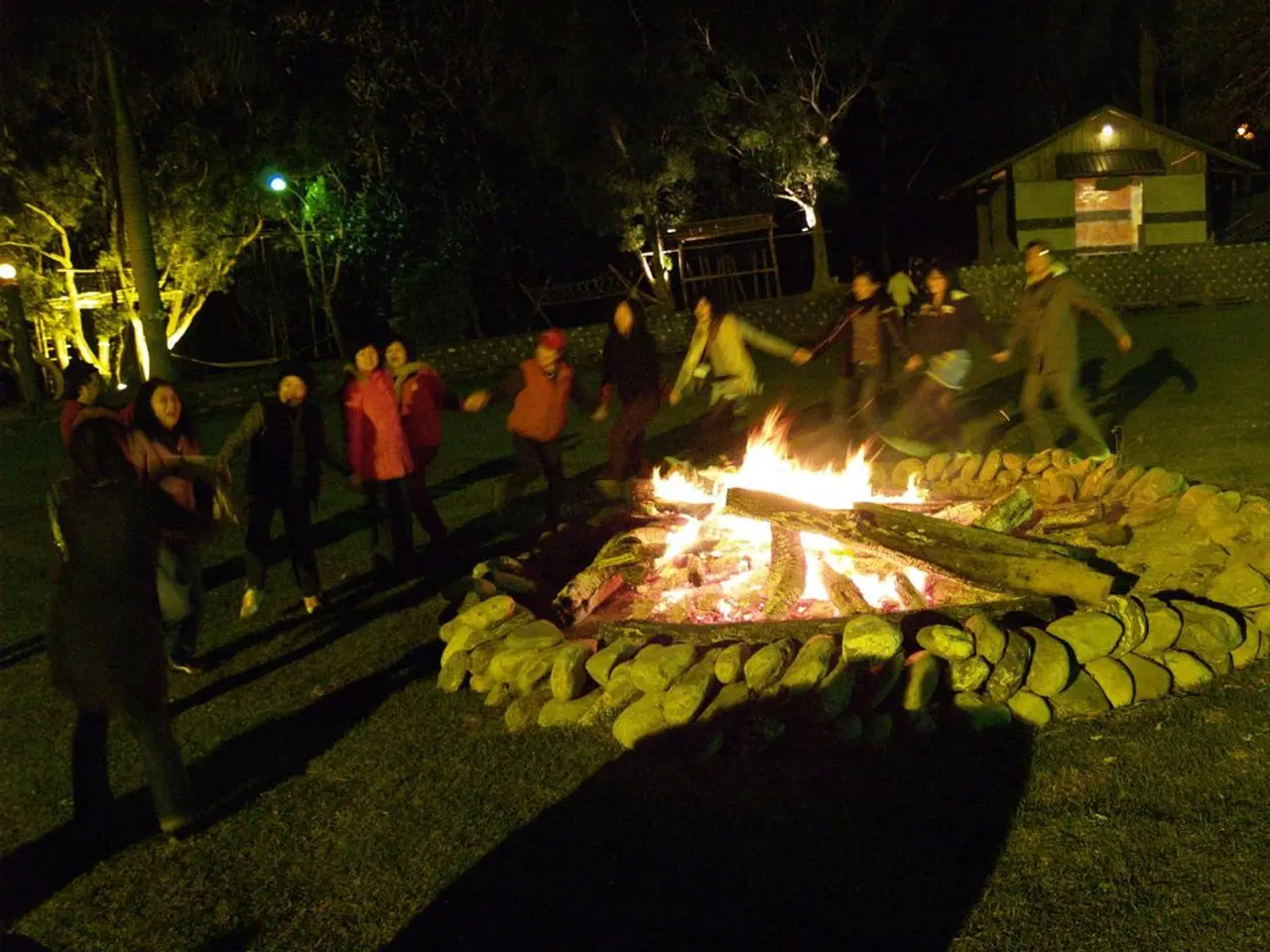Ancient ritual revival: Scotland's resurrection of a pagan practice centered around fire and fertility
The Beltane Fire Festival, held annually on Edinburgh's Calton Hill, is a vibrant celebration of ancient Celtic traditions that dates back to the Iron Age. This four-hour immersive, interactive experience, revived in 1988 by a group of artists and volunteers, has grown into a high-energy spectacle rooted in tradition but shaped by modern values.
Historically, Beltane (pronounced BEL-tayn) was a festival that celebrated the coming summer sunshine months and the fertility of nature. The term "Beltane" means "bright fire," highlighting the central role of bonfires in the celebration. Beltane is one of eight seasonal festivals in the Celtic calendar.
In ancient times, the festival involved extinguishing all household fires before lighting a large communal Beltane fire from which new fires (called "neid fires") were kindled to relight individual hearths, symbolizing community unity and renewal. Rituals included driving cattle between or jumping over bonfires for purification and protection, aiming to ensure health and fertility for people and animals. Celebrations often occurred on hilltops or sacred sites like stone circles, emphasizing a connection to natural and spiritual elements.
The modern revival of the Beltane Fire Festival seeks to reconnect with these ancient customs by staging vibrant community gatherings featuring the lighting of sacred flames, dance, and celebration of seasonal change. The festival's narrative involves characters representing aspects of nature, such as The Whites (emotions and energy of the May Queen), The Blues (elders upholding tradition and order), and The Reds (nature's chaos and carnality).
According to Ross Tinsley, a lecturer at Edinburgh Napier University, the group who resurrected Beltane were seeking a release from struggles against the dominant political landscape of Thatcherism. The revival of Beltane is also seen as part of Scots reclaiming their heritage and embracing indigenous cultures, as stated by Furmston-Evans.
The Beltane Fire Festival in Edinburgh is run by community volunteers today. Notably, the revival took place on Calton Hill, a space known in the 1980s for its connection to queer counterculture, due to its historical significance and political symbolism. The festival has grown from a small audience of about 50 in its first year to roughly 10,000 by 1999, reflecting a growing desire to reconnect with each other, the natural world, and ancient rhythms.
Paganism is on the rise, and Beltane's popularity reflects this trend. The Beltane Fire Festival is Britain's largest modern celebration of an ancient tradition that honors fire, fertility, and the changing season. The festival provides comfort to many during uncertain times, serving as a festival of hope for brighter times ahead.
- The Beltane Fire Festival, honoring ancient Celtic traditions dating back to the Iron Age and celebrating the coming summer sunshine months, has evolved into a modern spectacle rooted in community unity and renewal.
- The term "Beltane," meaning "bright fire," highlights the central role of bonfires in the festival's history, symbolizing the interconnection between nature, spirituality, and human health.
- Unlike ancient times, today's Beltane Fire Festival is run by community volunteers, drawing in around 10,000 people by 1999, reflecting a growing desire to reconnect with each other, the natural world, and ancient rhythms.
- Celebrating aspects of nature such as The Whites, The Blues, and The Reds, the modern Beltane Fire Festival seeks to reclaim Scotland's heritage and embrace indigenous cultures, while also serving as a festival of hope for brighter times ahead in turbulent times.
- The resurgence of paganism and the popularity of the Beltane Fire Festival coincide, as it become Britain's largest modern celebration of an ancient tradition that honors fire, fertility, and the changing season.
- The ancestors' practice of extinguishing household fires before kindling a communal Beltane fire from a sacred flame signifies a long history of using fire as a symbol of renewal, cultural exchange, and unity across time, lifestyles, and fashion-and-beauty, food-and-drink, and travel experiences.




